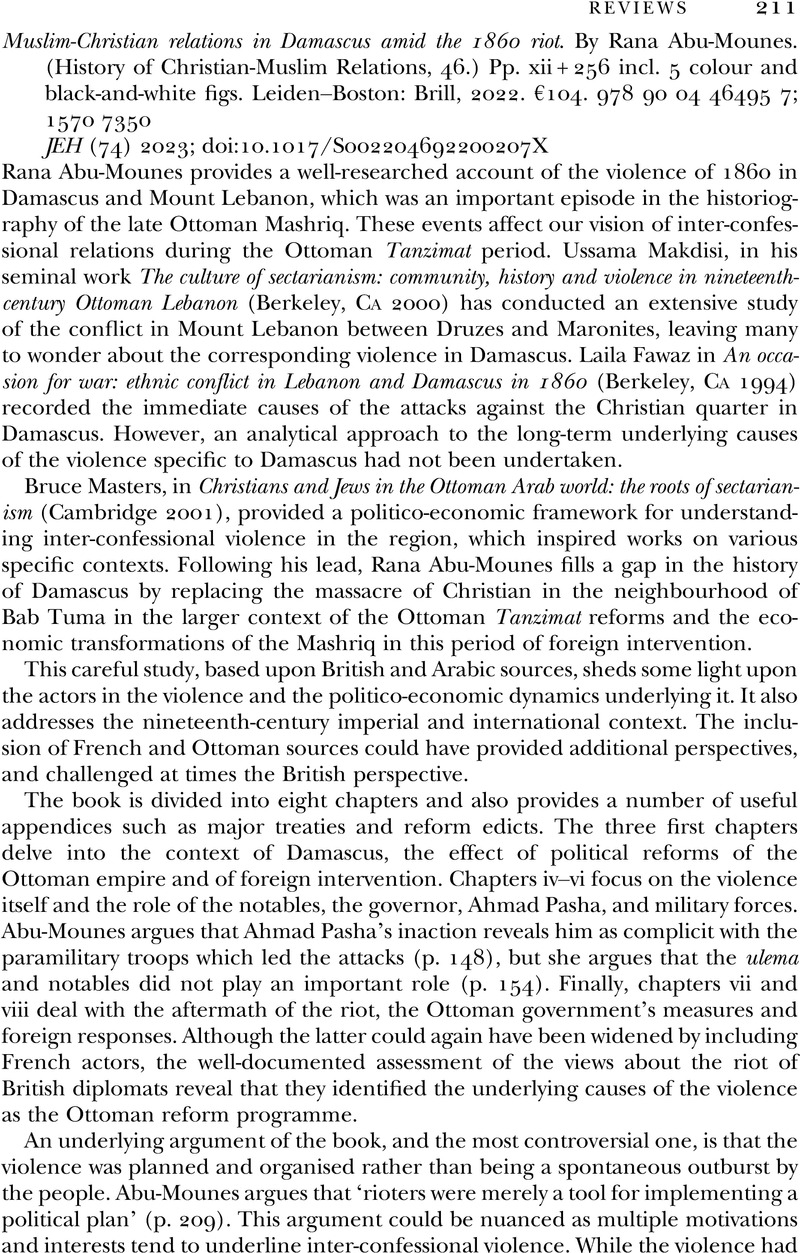No CrossRef data available.
Article contents
Muslim-Christian relations in Damascus amid the 1860 riot. By Rana Abu-Mounes. (History of Christian-Muslim Relations, 46.) Pp. xii + 256 incl. 5 colour and black-and-white figs. Leiden–Boston: Brill, 2022. €104. 978 90 04 46495 7; 1570 7350
Review products
Published online by Cambridge University Press: 29 December 2022
Abstract

- Type
- Reviews
- Information
- Copyright
- Copyright © Cambridge University Press 2022



